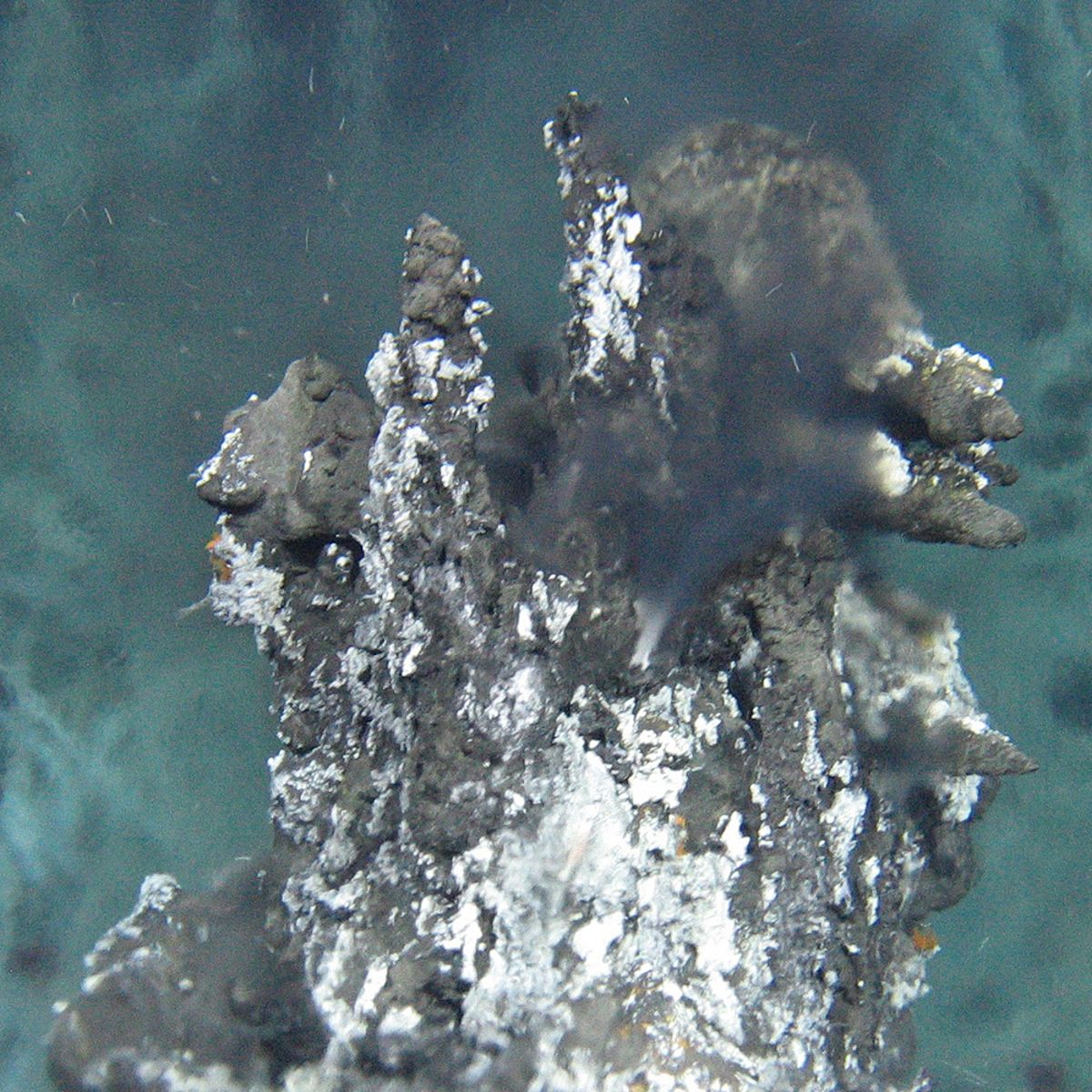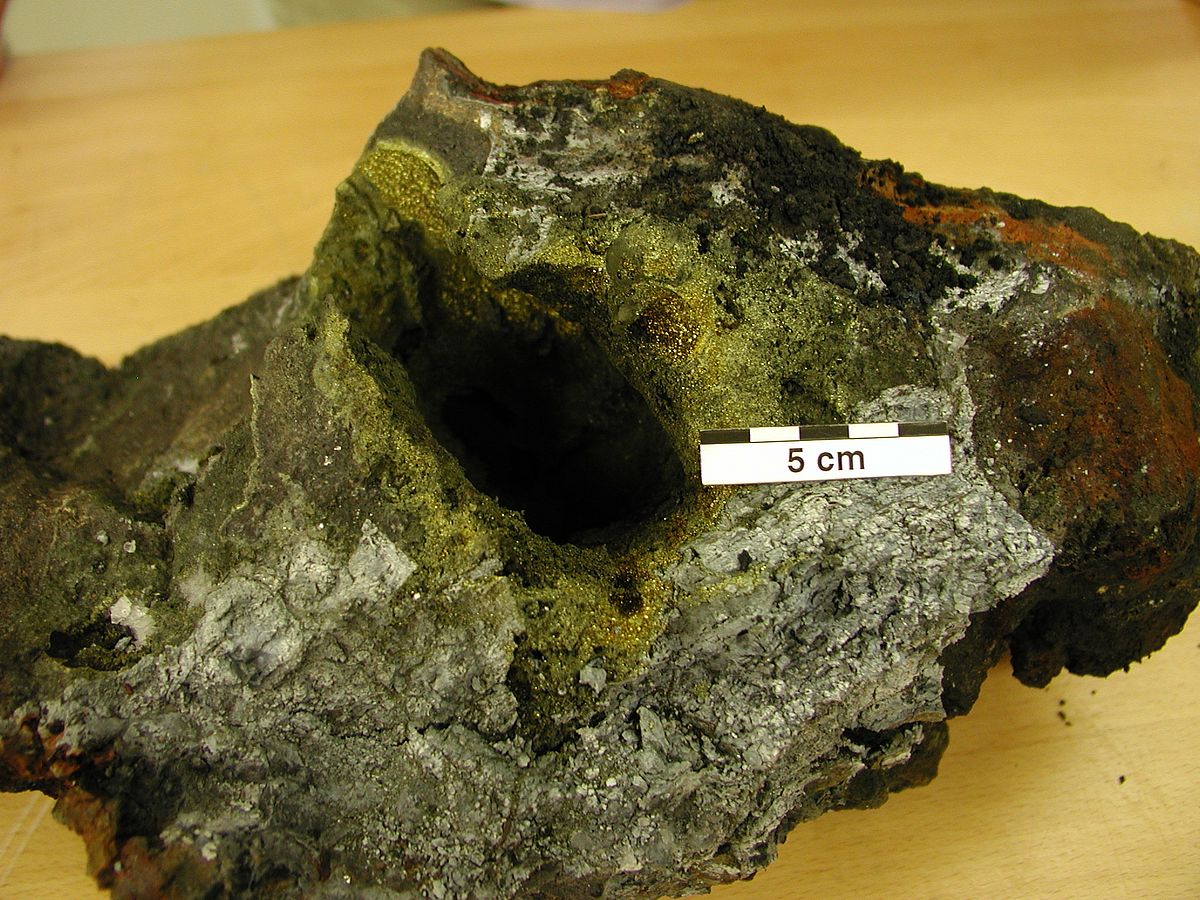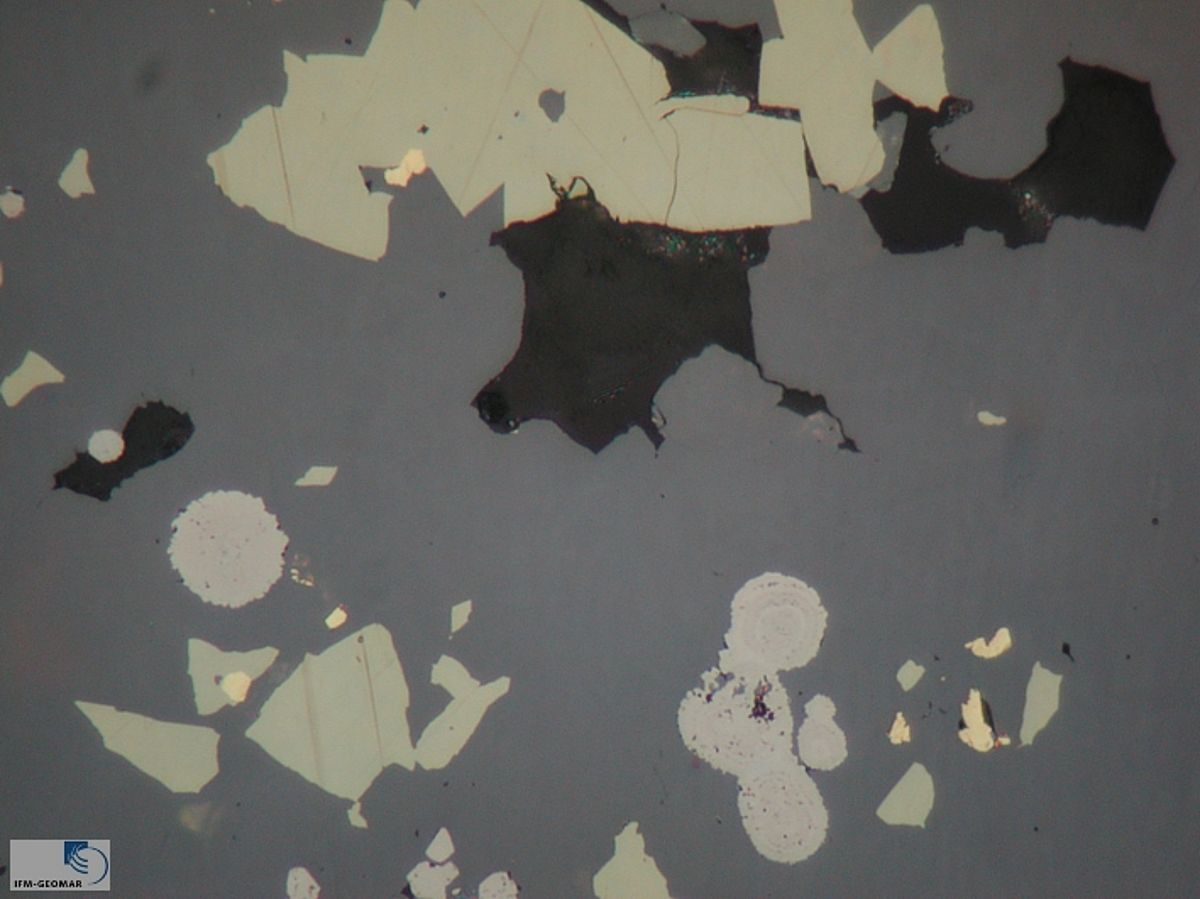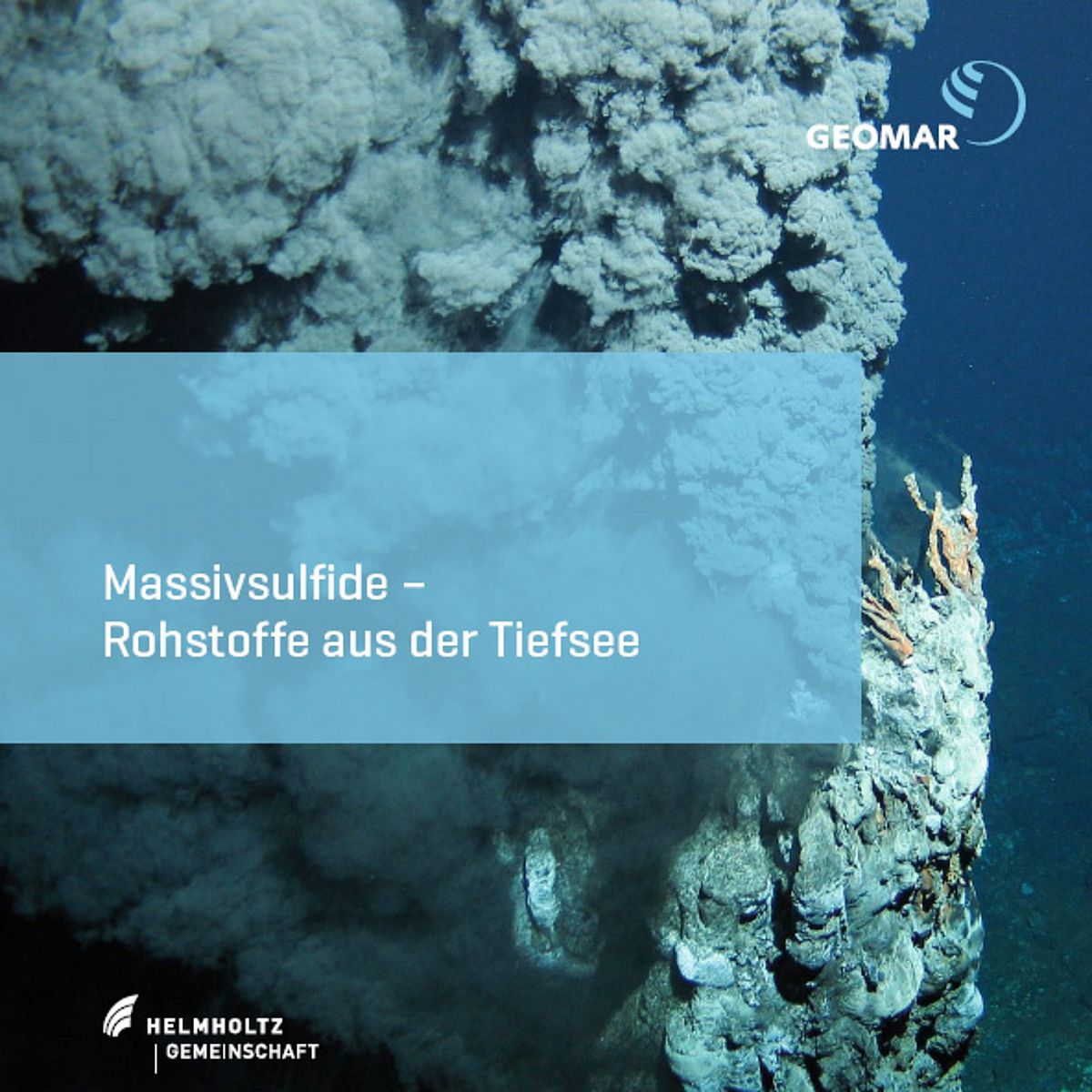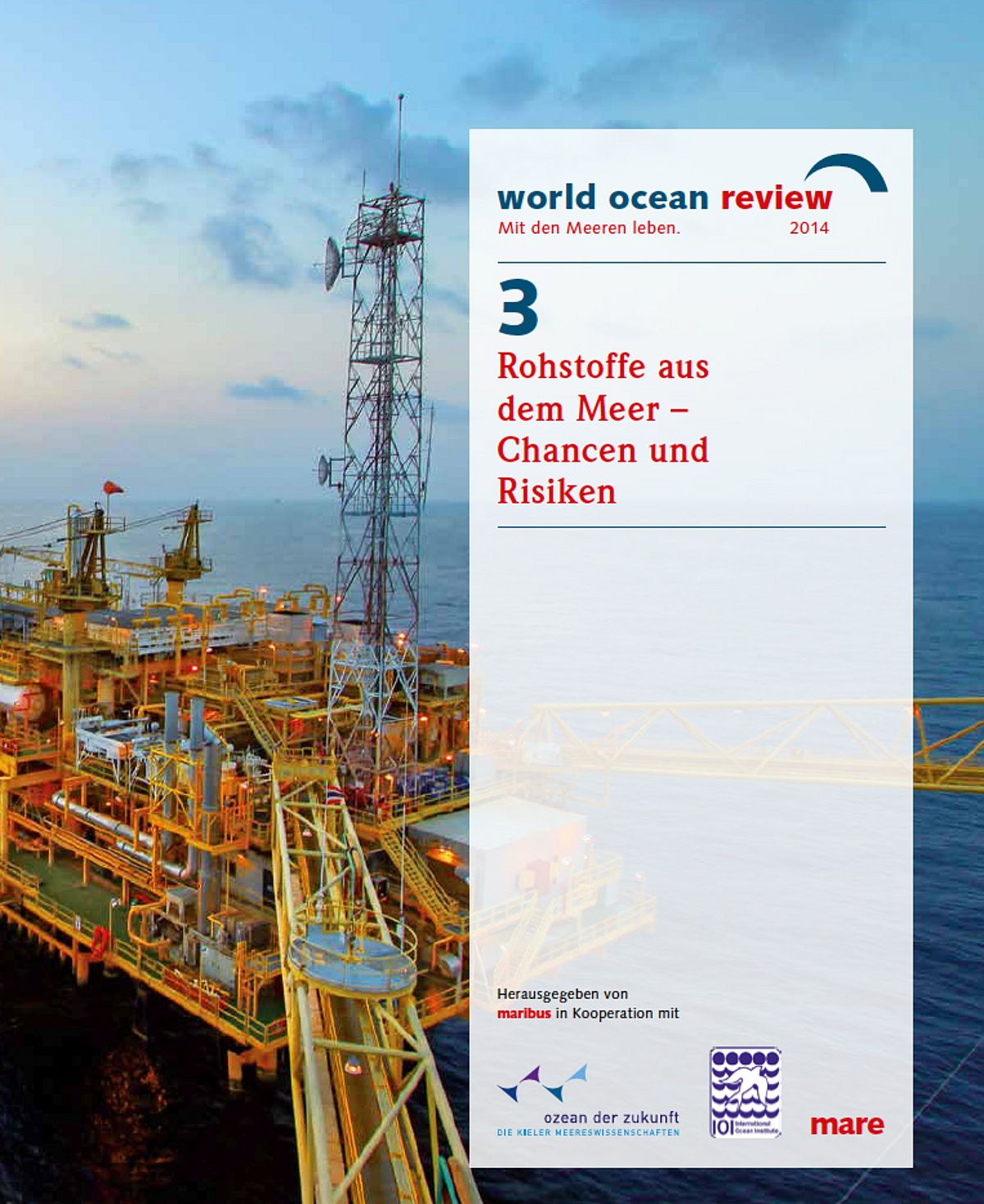The connection between volcanism and life on Earth is best seen along the mid-ocean spreading centers, the longest mountain chain on our planet. By far the majority of volcanic activity on Earth occurrs along these 55,000 km long ridges where hot magma rises from the interior of the Earth and creates new ocean floor.
The discovery of hot vents, associated faunal communities as well as of massive sulfides at 21°N on the East Pacific Rise in 1979 clearly showed that the formation of new oceanic crust is related to the existence of spectacular life in the deep sea but also to the formation of ore deposits.
The hot vents are the result of convection of heated seawater through the newly formed oceanic crust. Heating of seawater takes place close to a magma chamber or hot rock and modifies the seawater through a number of chemical reactions. This hot fluid rises because of its lower density and exits at the seafloor with temperatures of up to 400°C. Metals leached from the host rocks are precipitated upon contact of the hot fluid with oxygenated cold seawater forming the black smoke but also the chimneys themselves.
Since 1979 more than 400 areas of sulfide accumulation (see InterRidge vents database) have been documented in the world oceans. Of these 300 are currently hydrothermally active. Early investigations focused on fast-spreading ridges, for instance those along the East Pacific Rise, because the volcanic activity is high and magma chambers have been imaged 1 to 3 km below the seafloor. In the following decades, however, several deposits have been documented in areas previously considered unlikely to contain hydrothermal activity. This includes the slow-spreading Mid-Atlantic Ridge and especially the ultraslow-spreading ridges in the Arctic and along the Southwest Indian Ridge. Additionally, numerous deposits have now been recognized along shallow marine volcanoes along the Pacific Ring of Fire.
Targets: The investigation of hydrothermal systems allows to understand the processes that shape the surface of our planet and have a profound impact on the chemistry of the oceans and the formation of the oceanic crust itself. Moreover, the study of massive sulfides may provide clues about their resource potential, the origin of life on Earth or on extraterrestrial planets. Our work group investigates the genesis and evolution of massive sulfide deposits, the diversity of their base and precious metal enrichments, and metal zonations within the deposits.
Our knowldege of such hydrothermal systems is hampered by the lack of information from the interior of these deposits. Only few deposits have been drilled by the Ocean Drilling Program (ODP, now IODP). Therefore, we used a number of mobile drilling platforms to investigate the shallow subseafloor (5-15 m) of massive sulfide deposits in a fast and economic way.
Currently less than 10 % of the seafloor have been investigated in detail. The recent discoveries of asphalt lakes as well as liquid native sulfur lakes on several volcanic edifices of the West Pacific, show that many more surprises are waiting for us in the deep sea. The difficulties in working under great pressure in such remote places („Inner Space“) make these investigations cost-intensive and technology-based. The use of remotely operated vehicles (ROVs), autonomous underwater vehicles (AUVs), mobile drilling platforms and long-term observatories will help to better understand the formation and temporal evolution of hydrothermal systems and therefore the system Earth.
Resources
Some of the massive sulfide deposits in the deep sea are enriched in copper, zinc, and, depending on the geological setting of the deposit, also in the precious metals gold and silver. High grades of these metals have sparked the interest of mining companies and entire countries in order to investigate their possible future resource potential. Despite high tonnages in few deposits the collected samples from these deposits represent no more than a few hundred tonnes of material.
Based on the currently available data and the lack of data from the interior of most deposits it seems premature to comment on a possible economic impact of deep sea mining of massive sulfides. Published geochemical data indicate that the marine deposits are characterized by high metal grades when compared to land deposits. However, this is largely a sampling artifact, as commonly only the chimneys themselves are sampled in the marine environment by submersibles and ROVs. Additionally, analyses of a few individual samples are commonly compared to the average grade of large deposits on land, a comparison that is not realistic.
A number of submarine hydrothermal systems, commonly those in shallow waters, are also characterized by high natural concentrations of heavy metals such as lead, arsenic, antimony and mercury. The impact of the released heavy metals on the environment (fisheries around shallow submarine volcanoes) is not well studied.
Projects:
INDEX, geologische Kartierungen im Indischen Ozean (BGR): 2017-2020
EU-FP7-Projekt "Blue Mining": 2014-2018
OASIS, Indischer Ozean (BMBF): 2015-2018
Shallow drilling of hydrothermal systems in the Tyrrhenian Sea (Palindrill)
The third dimension of the ultramafic-hosted Logatchev hydrothermal field: Genesis, evolution, and pathways in the subseafloor (Logdrill)


